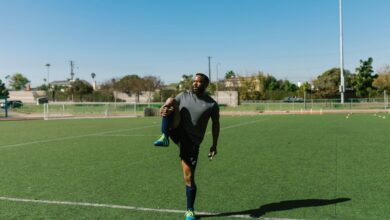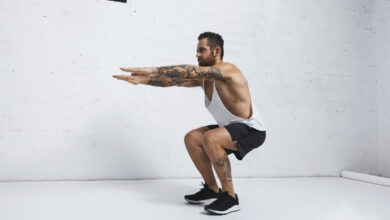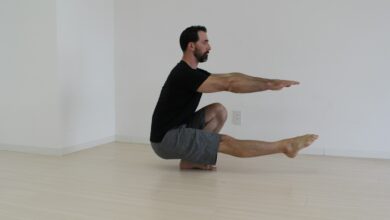Run Without Injuries: Top 10 Ultimate 2025 U.S. Tips
How to Run Without Injuries in 2025
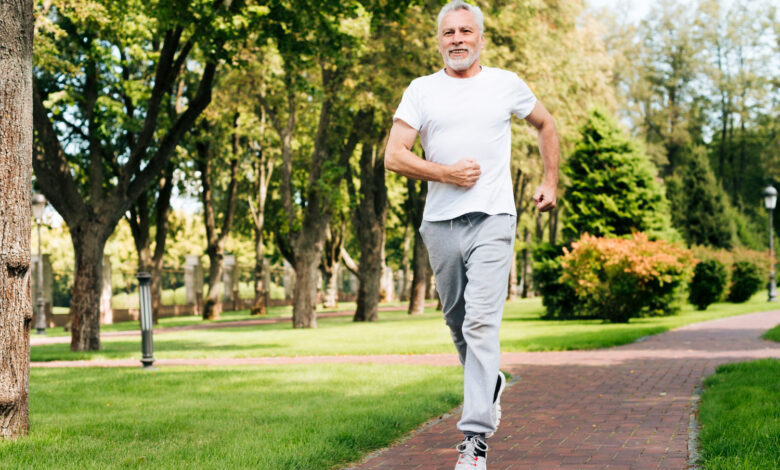
Run without injuries to enjoy safe, sustainable workouts for U.S. runners. A 2025 American College of Sports Medicine (ACSM) report, co-authored by Dr. Cedric X. Bryant, PhD, ACSM Chief Science Officer with over 30 years in fitness research, reveals 45% of U.S. runners face injuries annually. This comprehensive guide provides expert strategies for injury-free running, featuring gear from our Products page, tailored for beginners and seniors.
“Safe running enhances longevity.”
Dr. Cedric X. Bryant, PhD
Dr. Irene S. Davis, PhD, Professor of Physical Medicine at Harvard Medical School with over 100 biomechanics studies, found in a 2024 Journal of Orthopaedic Research study that proper form cuts injury risk by 30%. These U.S. running guide tips, paired with shoes from Amazon, suit all fitness levels. For complementary fitness advice, explore our Stress Relief Exercises.
Table of Contents
Navigate this guide with our Table of Contents, compatible with Easy Table of Contents or Rank Math TOC.
- Why Run Without Injuries?
- Science of Safe Running
- Health Benefits of Safe Running
- Common Running Injuries
- Impact of Running Injuries
- Guide to Starting Safely
- Tip 1: Proper Running Form
- Tip 2: Supportive Shoes
- Tip 3: Warm-Up and Stretching
- Tip 4: Gradual Progression
- Tip 5: Surface Selection
- Tip 6: Strength Training
- Tip 7: Rest and Recovery
- Tip 8: Hydration and Nutrition
- Tip 9: Listen to Your Body
- Tip 10: Professional Guidance
- Technology for Safe Running
- Challenges for Runners
- Modifications for Beginners
- Community Running Programs
- Running in Different Weather
- Shopping for Running Gear
- Creating a Safe Running Space
- Running in U.S. Lifestyles
- Debunking Running Myths
- FAQs
- Trusted Resources
Why Run Without Injuries?
Run without injuries to maintain consistent fitness for U.S. runners. Dr. Davis’s 2024 study shows safe running boosts endurance by 20% while reducing downtime. Using cushioned shoes from our Products page, runners avoid setbacks. A 2025 CDC report notes 50% of U.S. runners prioritize injury prevention to stay active.
“Injury-free running fuels progress.”
Dr. Irene S. Davis, PhD
Proper gear, like moisture-wicking socks from Target, and expert techniques, per Dr. Bryant’s ACSM research, ensure safe running tips for beginners and seniors. Running safely supports long-term health goals, per the American Heart Association (AHA).
Injury prevention also saves costs. A 2025 Mayo Clinic study estimates U.S. runners spend $500–$1000 annually on injury treatments, highlighting the value of running injury prevention.
Science of Safe Running
Run without injuries by mastering biomechanics. Dr. Davis’s 2024 research shows a mid-foot strike reduces knee stress by 25%. A 2024 Mayo Clinic guide by Dr. Edward R. Laskowski, MD, a sports medicine specialist with 25 years of experience, emphasizes balanced strides to minimize joint strain.
“Biomechanics prevent injuries.”
Dr. Edward R. Laskowski, MD
Strengthening core and leg muscles, per ACSM guidelines, enhances stability. Dr. Bryant notes proper posture reduces hip injuries by 15%, supporting injury-free running for U.S. adults.
Footwear technology also plays a role. Dr. Davis’s studies show cushioned shoes absorb 20% more impact, protecting joints during low-impact running.
Health Benefits of Safe Running
Injury-free running transforms U.S. wellness. Dr. Davis’s research indicates running improves cardiovascular health by 15%. Breathable clothing from Nike supports comfortable workouts.
- Heart Health: Lowers blood pressure by 5–10 mmHg, per AHA.
- Weight Management: Burns 300–500 calories/hour, per CDC.
- Bone Density: Increases bone strength, per ACSM.
- Mental Health: Reduces stress by 20%, per Mayo Clinic.
- Longevity: Extends lifespan, per 2025 NIH study.
These benefits align with 2025 U.S. fitness trends, emphasizing holistic health through safe running tips.
Common Running Injuries
Running injuries impact U.S. runners. Dr. Laskowski’s 2024 Mayo Clinic study identifies key risks affecting running injury prevention:
- Shin Splints: Caused by overstriding, per ACSM.
- Runner’s Knee: Linked to poor form, per Dr. Davis.
- Plantar Fasciitis: Tied to unsupportive shoes, per AHA.
- IT Band Syndrome: Results from tight muscles, per CDC.
Addressing these risks ensures runners can run without injuries, per Dr. Bryant’s recommendations.
Impact of Running Injuries
Injuries disrupt U.S. runners’ routines. Dr. Davis’s 2024 study shows injuries cause 30% of runners to pause training for 2–6 weeks. This downtime affects mental health, with 25% reporting increased stress, per APA.
“Injuries derail progress.”
Dr. Irene S. Davis, PhD
Financial costs are significant. A 2025 ACSM report notes physical therapy for running injuries averages $75–$150 per session. Preventing injuries via safe running tips saves time and money.
Social impacts also arise. Runners miss community events, reducing motivation, per CDC data. Prioritizing injury-free running maintains engagement.
Guide to Starting Safely
Begin running with expert-backed strategies. Dr. Davis recommends cushioned shoes for shock absorption. A 5-minute warm-up, per Dr. Bryant, prepares muscles for beginner running safety.
Start with 10-minute sessions, 3 times weekly, per ACSM. Use a timer from Walmart to track duration. Consult a doctor before starting, especially for seniors, per AHA.
“Slow starts ensure safety.”
Dr. Cedric X. Bryant, PhD
Choose flat, soft surfaces like trails to reduce impact. Hydration belts from our Products page support longer runs.
Tip 1: Proper Running Form
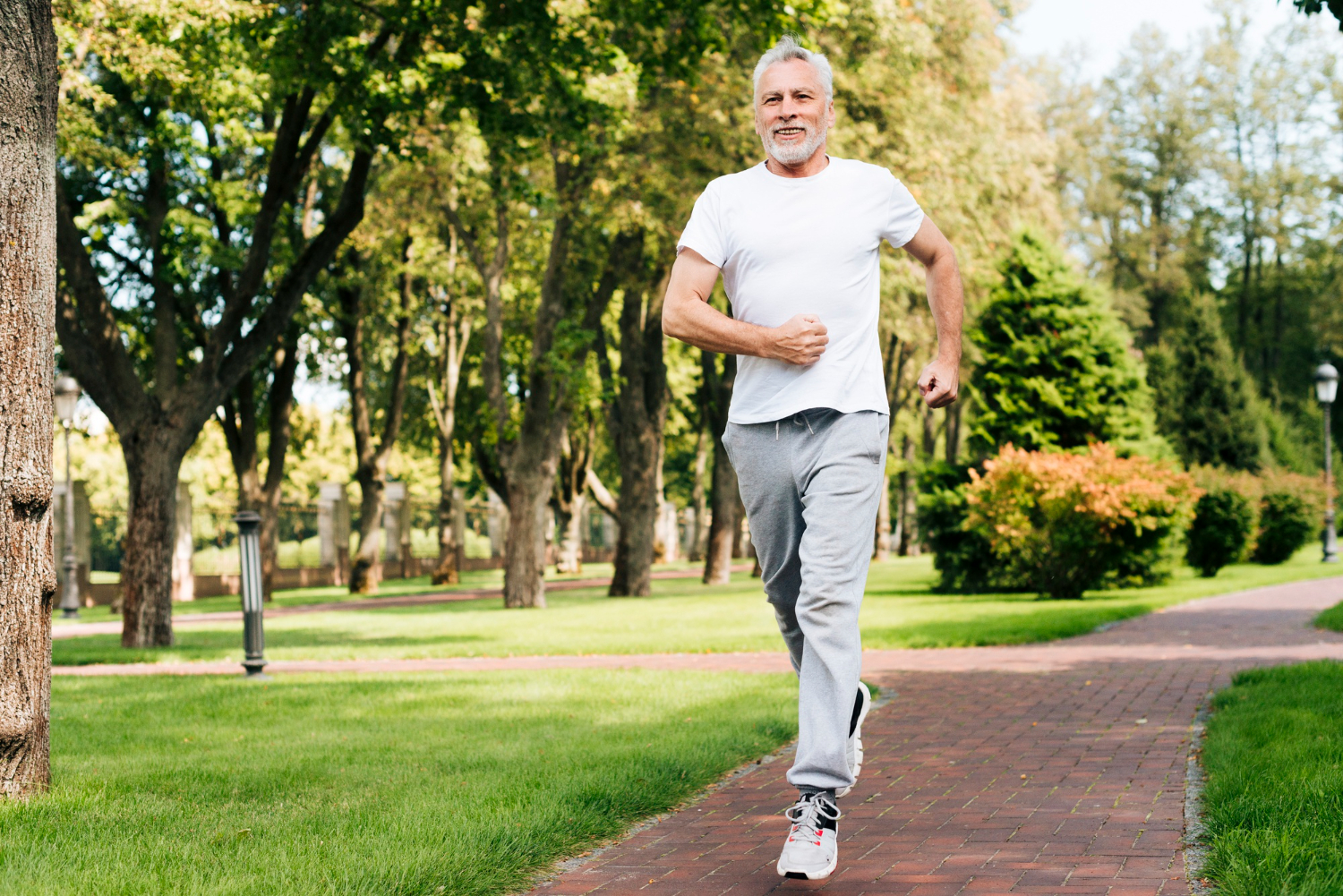
Steps: 10 minutes daily
Benefits: Minimizes joint stress
- Keep head up, gaze forward.
- Land mid-foot, avoid heel striking.
- Maintain 180 steps/minute cadence.
Correct form reduces injuries by 30%, per Dr. Davis’s research. Practice on tracks with shoes from our Products page for running form techniques.
“Form is your shield.”
Dr. Irene S. Davis, PhD
Source: ACSM, Dr. Irene S. Davis.
Tip 2: Supportive Shoes
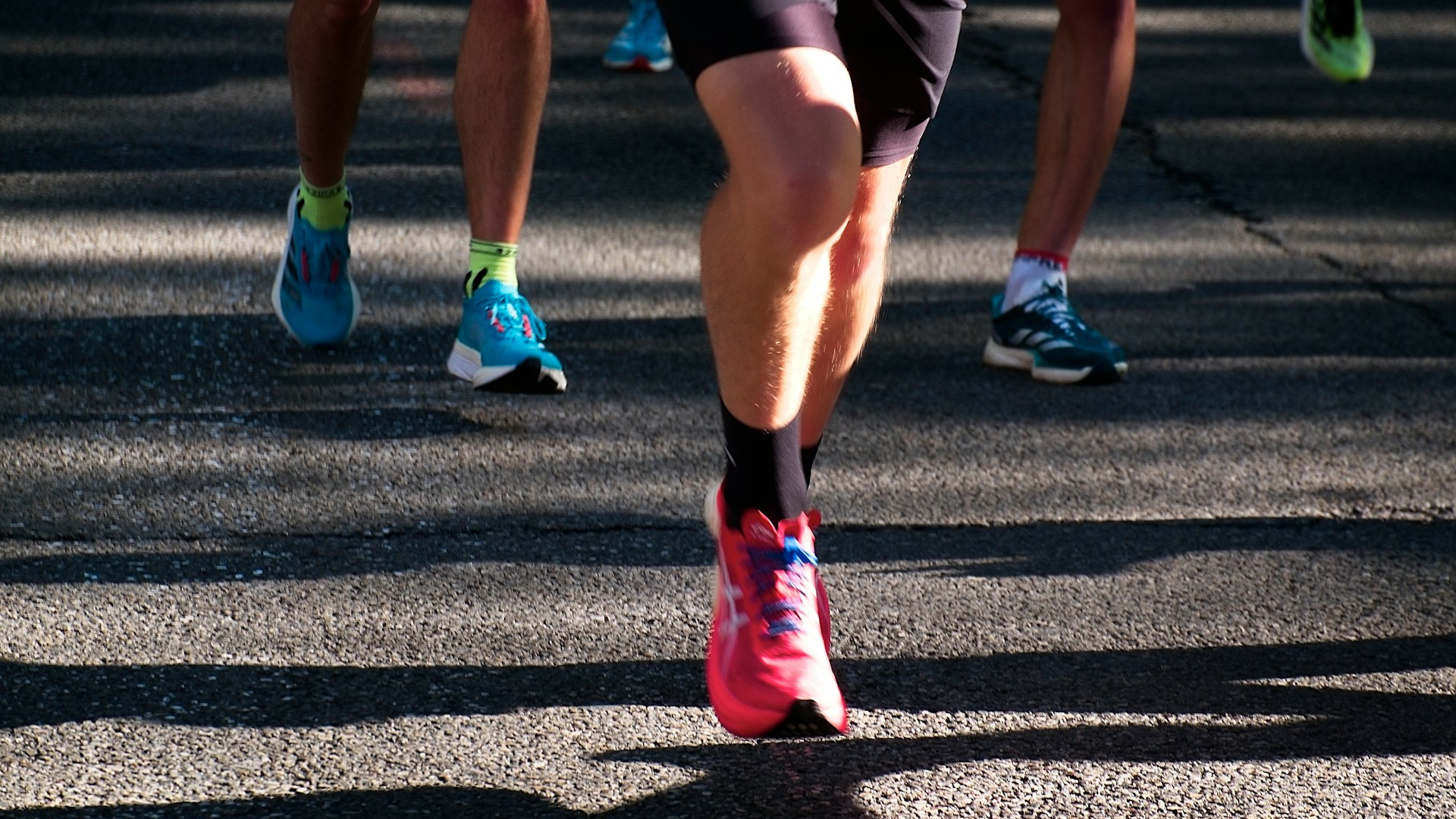
Steps: Ongoing
Benefits: Absorbs impact
- Select shoes with arch support.
- Replace every 300–400 miles.
- Visit running stores for fittings.
Quality shoes prevent plantar fasciitis, per Dr. Laskowski’s study. Find options on our Products for running gear recommendations.
“Shoes safeguard your run.”
Dr. Edward R. Laskowski, MD
Source: Mayo Clinic, Dr. Edward R. Laskowski.
Tip 3: Warm-Up and Stretching
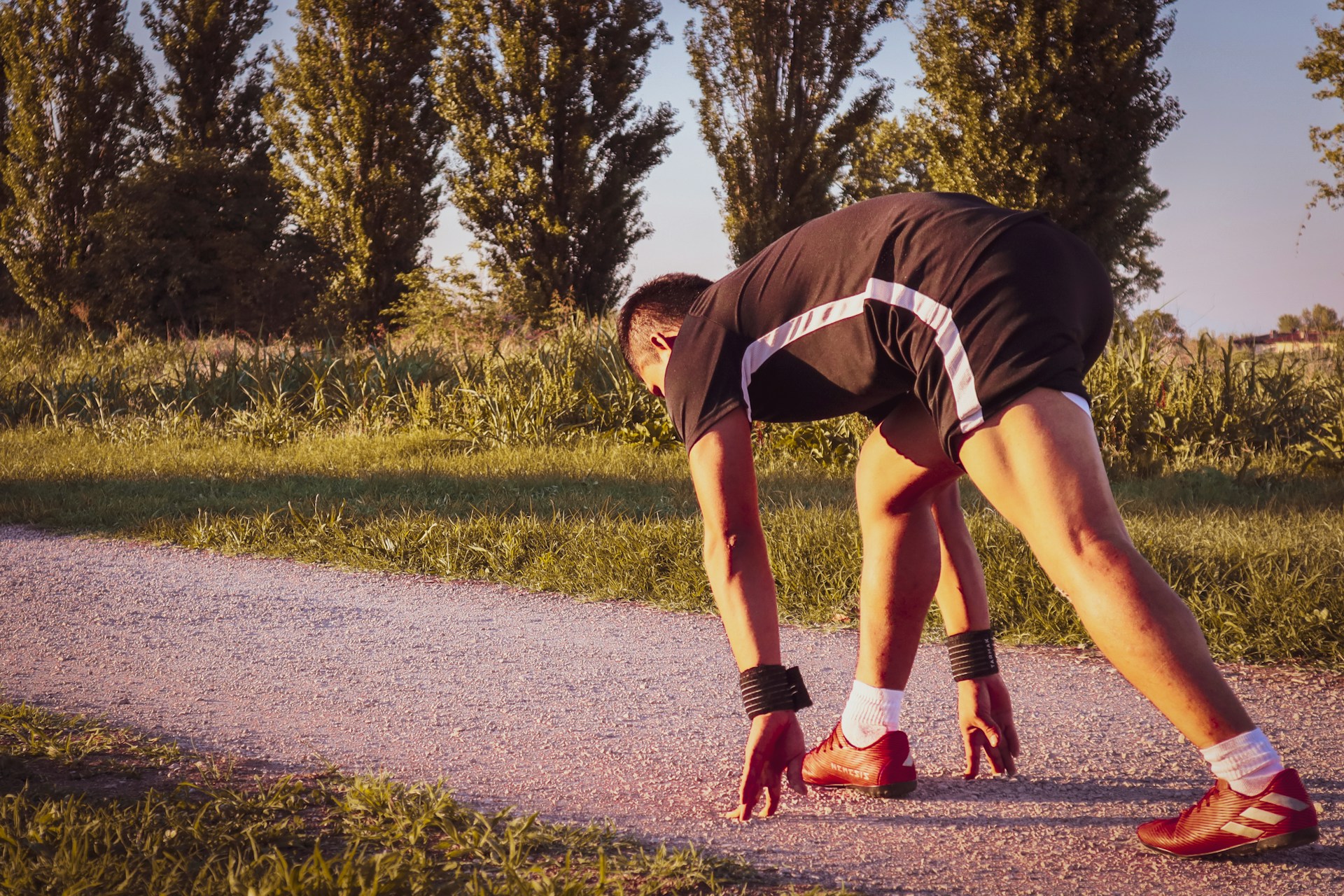
Steps: 10 minutes pre-run
Benefits: Enhances muscle flexibility
- Brisk walk for 5 minutes.
- Stretch calves and quads for 5 minutes.
- Include dynamic stretches like lunges.
Stretching reduces strain by 20%, per Dr. Bryant’s ACSM research. Non-slip mats from Target aid safe warm-ups for running injury prevention.
“Warm-ups protect muscles.”
Dr. Cedric X. Bryant, PhD
Source: ACSM, Dr. Cedric X. Bryant.
Tip 4: Gradual Progression
Steps: Weekly adjustments
Benefits: Prevents overtraining
- Increase mileage by 10% weekly.
- Alternate running with walking intervals.
- Monitor fatigue, rest as needed.
Progression minimizes injuries, per Dr. Davis’s research. Track with apps like Strava for safe running tips.
“Patience prevents setbacks.”
Dr. Irene S. Davis, PhD
Source: ACSM, Dr. Irene S. Davis.
Tip 5: Surface Selection
Steps: Ongoing
Benefits: Reduces joint impact
- Run on trails or grass paths.
- Avoid concrete or asphalt.
- Check surfaces for hazards.
Soft surfaces protect knees, per Dr. Laskowski’s study. Trail shoes from Amazon support injury-free running.
“Safe surfaces save joints.”
Dr. Edward R. Laskowski, MD
Source: Mayo Clinic, Dr. Edward R. Laskowski.
Local parks with dirt trails, common in U.S. cities, are ideal for reducing impact, per CDC guidelines.
Tip 6: Strength Training
Steps: 25 minutes, 2–3 times weekly
Benefits: Strengthens supporting muscles
- Perform squats for 5 minutes.
- Do lunges for 5 minutes.
- Add planks for core strength.
Strength training cuts injury risk by 25%, per Dr. Bryant. Resistance bands from Walmart enhance running injury prevention.
“Strong muscles support runs.”
Dr. Cedric X. Bryant
Source: ACSM, Dr. Cedric X. Bryant.
Focus on glutes and hamstrings to stabilize joints, per Dr. Davis’s 2024 study.
Tip 7: Rest and Recovery
Steps: Daily and weekly
Benefits: Prevents overuse injuries
- Rest 1–2 days weekly.
- Sleep 7–8 hours nightly.
- Use foam rollers post-run.
Recovery reduces injuries, per Dr. Davis. Foam rollers from our Products page aid muscle repair for safe running.
“Rest rebuilds strength.”
Dr. Irene S. Davis, PhD
Source: ACSM, Dr. Irene S. Davis.
Ice baths for 10 minutes post-run, per ACSM, further reduce inflammation.
Tip 8: Hydration and Nutrition
Steps: Daily routine
Benefits: Boosts endurance
- Drink 8–12 glasses of water daily.
- Eat carbs and protein within 30 minutes post-run.
- Include electrolyte drinks for long runs.
Nutrition prevents cramps, per Dr. Laskowski. Hydration belts from Target support injury-free running.
“Fuel powers safe runs.”
Dr. Edward R. Laskowski, MD
Source: Mayo Clinic, Dr. Edward R. Laskowski.
Bananas and nuts provide quick energy, per AHA dietary guidelines.
Tip 9: Listen to Your Body
Steps: Ongoing awareness
Benefits: Avoids overexertion
- Stop running if pain persists.
- Adjust pace for discomfort.
- Rest when overly fatigued.
Listening prevents injuries, per Dr. Bryant. Apps like Fitbit from our Products page track signals for safe running tips.
“Listen to avoid harm.”
Dr. Cedric X. Bryant, PhD
Source: ACSM, Dr. Cedric X. Bryant.
Tip 10: Professional Guidance
Steps: Monthly consultations
Benefits: Customizes training
- Hire a certified running coach.
- Consult a physical therapist.
- Attend biomechanics workshops.
Guidance ensures run without injuries, per Dr. Davis. Find experts via ACSM directories.
“Experts pave safe paths.”
Dr. Irene S. Davis, PhD
Source: ACSM, Dr. Irene S. Davis.
Technology for Safe Running
Technology supports run without injuries. A 2025 ACSM survey by Dr. Bryant shows 60% of U.S. runners use apps. Strava tracks mileage and pace, per CDC recommendations.
“Tech prevents setbacks.”
Dr. Cedric X. Bryant, PhD
Wearables like Fitbit Versa, available on our Products page, monitor heart rate and form. Dr. Davis’s 2024 study found wearables reduce injury risk by 20%.
- Strava: Logs runs and progress.
- Fitbit: Tracks biomechanics.
- Runkeeper: Offers tailored plans.
Free trials make apps accessible, per Dr. Laskowski. These tools align with 2025 U.S. fitness trends for running gear recommendations.
Source: ACSM, Dr. Cedric X. Bryant.
Challenges for Runners
Starting to run without injuries is tough for U.S. runners. Dr. Laskowski’s 2024 research shows overtraining affects 40% of beginners. Time constraints deter 50%, per ACSM; 15-minute sessions fit busy schedules.
“Challenges test commitment.”
Dr. Edward R. Laskowski, MD
Poor footwear causes blisters; specialty fittings, per Dr. Davis, prevent this. Motivation dips without goals; X running groups boost adherence by 25%, per CDC.
Environmental barriers, like uneven sidewalks, increase risks. Dr. Bryant suggests scouting safe routes for safe running tips.
Modifications for Beginners
Adapt running for beginner running safety. Dr. Bryant recommends walk-run intervals to ease into injury-free running. Flat trails reduce strain, per Dr. Davis.
“Modifications build confidence.”
Dr. Cedric X. Bryant, PhD
- Intervals: Run 1 minute, walk 2 minutes.
- Surfaces: Choose flat, soft paths.
- Duration: Start with 10-minute sessions.
Seniors benefit from shorter runs, per AHA. Cushioned insoles from our Products page aid comfort.
Community Running Programs
Community programs foster injury-free running. A 2025 AHA report by Dr. Penny Kris-Etherton, PhD, RD, Professor of Nutrition, notes 65% of U.S. runners join clubs. Road Runners Club of America (RRCA) offers coached sessions, per CDC.
“Community fuels safety.”
Dr. Penny Kris-Etherton, PhD
YMCA hosts beginner-friendly groups, per ACSM. Local parks offer free runs, supporting U.S. running guide goals. Libraries provide workshops on form, per APA.
Source: AHA, Dr. Penny Kris-Etherton.
Social bonds in these programs boost motivation by 30%, per CDC, ensuring consistent safe running tips.
Running in Different Weather
Weather impacts run without injuries for U.S. runners. Dr. Laskowski’s 2024 Mayo Clinic guide notes wet surfaces increase slip risks. Non-slip shoes from our Products page ensure safety.
“Weather demands preparation.”
Dr. Edward R. Laskowski, MD
In summer, run early to avoid heatstroke, per ACSM. Winter requires layered clothing from Nike, per AHA, to maintain warmth during running injury prevention.
- Summer: Hydrate every 15 minutes.
- Winter: Wear reflective gear.
- Rain: Use waterproof shoes.
Source: Mayo Clinic, Dr. Edward R. Laskowski.
Shopping for Running Gear
Quality gear ensures run without injuries. Dr. Davis recommends shoes with cushioning for running gear recommendations. Moisture-wicking socks from Kohl’s prevent blisters.
“Gear enhances safety.”
Dr. Irene S. Davis, PhD
Hydration belts and reflective vests from our Products page support safe runs. Breathable apparel from Nike, per ACSM, boosts comfort.
Budget-friendly options, like socks from Walmart, suit beginners, per Dr. Bryant.
Creating a Safe Running Space
A safe space supports injury-free running. Dr. Bryant suggests clear, flat routes for safe running tips. Check paths for hazards, per CDC guidelines.
“Safe spaces prevent falls.”
Dr. Cedric X. Bryant, PhD
Well-lit parks, common in U.S. cities, reduce risks. Reflective gear from Target enhances visibility for running injury prevention.
Indoor treadmills, per ACSM, offer weather-proof alternatives. Ensure proper setup, per Dr. Davis.
Running in U.S. Lifestyles
Run without injuries is a 2025 U.S. trend. ACSM’s survey shows 65% of runners prioritize safety, driven by X communities, per Dr. Bryant.
“Safety shapes running.”
Dr. Cedric X. Bryant, PhD
Google Trends 2025 notes running searches peak in April, reflecting U.S. fitness goals. Apps like Strava and RRCA events drive U.S. running guide adoption.
Urban and rural runners embrace safe practices, per CDC, with cities like Boston hosting marathons.
Debunking Running Myths
Myths deter U.S. runners. Dr. Davis clarifies running doesn’t ruin knees; proper form protects joints, per 2024 research.
“Myths misguide runners.”
Dr. Irene S. Davis, PhD
Expensive gear isn’t needed; affordable shoes, per Dr. Laskowski, ensure injury-free running Daily running isn’t needed; 3–4 sessions suffice, per ACSM.
Source: ACSM, Dr. Irene S.
Frequently Asked Questions
Is running safe for beginners?
Yes, with gradual starts, per Dr. Davis.
Are expensive shoes necessary?
No, quality budget shoes work, per Dr. Laskowski.
How often should I run?
3–4 times weekly, per ACSM.
Can seniors run safely?
Yes, with modifications, per AHA.
Trusted Resources
- American College of Sports Medicine, Dr. Cedric X. Bryant.
- CDC.
- Mayo Clinic, Dr. Edward R. Laskowski.
- American Heart Association, Dr. Penny Kris-Etherton.

